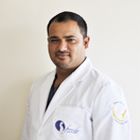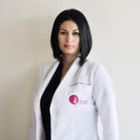
Provida Fertility Clinic
Guadalajara, Mexico
In Vitro Fertilization (IVF)
Starting from $155,000
Established
Highlights at Provida Fertility Clinic
Map View
 Click to explore
Click to explore
-
Reviews (1)
5.0 Languages spoken
- English
- French
- Spanish
In Vitro Fertilization (IVF) at Provida Fertility Clinic
What does Provida Fertility Clinic offer patients?
How many specialists are there and what accreditation's have been awarded to Provida Fertility Clinic?
Facility Services Available at Provida Fertility Clinic














WHY US?
At Medijump, we're making medical easy. You can search, compare, discuss, and book your medical all in one place. We open the door to the best medical providers worldwide, saving you time and energy along the way, and it's all for FREE, no hidden fees, and no price markups guaranteed. So what are you waiting for?

Free

Best Price

Widest Selection

Risk-Free
What you need to know about In Vitro Fertilization (IVF) in Guadalajara
In order for a pregnancy to occur naturally, the ovary releases an egg at ovulation which travels through the Fallopian tube where it meets the sperm and is then fertilized. The fertilized egg enters the uterine cavity where it implants in the thickened lining of the uterus (the endometrium).
Through IVF treatment (In Vitro Fertilisation), the ovaries are stimulated to produce a number of eggs which are then collected and mixed with sperm in the laboratory; this then allows fertilization to occur. The developing embryos are monitored closely and the healthiest embryos are then transferred into the uterus to allow implantation to occur.
IVF is a series of procedures performed to treat infertility especially to women over the age of 40. It can also be used as a treatment for certain health conditions such as Ovulation Disorder, Premature Ovarian Failure, Fallopian Tube Damage, Endometriosis, Unexplained Infertility, Uterine Fibroids, Impaired sperm production or function, Previous tubal sterilization or removal, Genetic Disorder, or Fertility preservation for cancer patients.
What's the Recovery Time for In Vitro Fertilization (IVF) Procedures?
Although the In Vitro Fertilization (IVF) isn't a surgery procedure, it consists of specific methods that call for a recuperation period. After the embryo has been inserted, it's common for medical professionals to advise a brief rest interval. The human body requires a span of adjustment in anticipation of possible conception, hence the importance of granting it the needed time.
The actual recovery from the specific stages of the embryo implantation and egg collection is typically rapid, generally inside a day or possibly two. However, the actual recuperation and waiting period expands to roughly a fourteen-day period following the embryo insertion - infamously known as the "two-week wait". This timeframe marks the potential start ofearly pregnancy stages, and can serve as both a physical and emotional healing process from the procedure.
The hormone-based medications administered as part of the In Vitro Fertilization (IVF) can also bring about symptoms such as fluid retention, stomach ache, mood fluctuations, and sensitivity where the injection is administered. These symptoms are apt to decrease as your body accustoms to the hormonal variation, but they could add to the duration of the recovery phase.
What's the Success Rate of In Vitro Fertilization (IVF) Procedures?
Assessing the effectiveness of the In Vitro Fertilization (IVF) requires a comprehensive analysis. The effectuality rates can be substantially impacted by various elements, such as the patient's age and overall wellness, the reason behind infertility, the specific procedure implemented, and lifestyle elements like dietary habits and physical activity routines. 40% of Women under the age of 35 will be successful and 25% of women aged 36 to 41 will be successful and only 4% over the age of 42 will be successful. You must also understand that pregnancy rates are not exactly the same as the live birth rate.
Moreover, the aptitude and proficiency of the involved healthcare experts should also be factored in. For example, the patient's age is a vital factor in determining success rates, with younger women generally having healthier egg cells, thereby elevating the possibility of IVF success. Essentially, the capabilities of the clinic, the technology within the lab, and the embryologist's professional expertise collectively contribute to the outcome of the procedure. Therefore, taking these aspects into account, it becomes crucial to opt for a clinic recognized for its high success rates.
Other Reproductive Medicine Procedures Available at Provida Fertility Clinic
Semen Analysis
Sperm Freezing
Embryo Freezing
Artificial Insemination
Egg Freezing
Preimplantation Genetic Diagnosis (PGD)
IVF Consultation
Diagnostic Tests
Egg Retrieval
ERA Test (Endometrial Receptivity Array)
Female Fertility Testing
Fertility Assessment
Hormone Tests
Hysterosalpingography (HSG)
Mini IVF
Ovarian Drilling
Reproductive Medicine Consultation
Sperm DNA Fragmentation Test
Tubal Cannulation
Intrauterine Insemination (IUI)
Popular Procedures in Guadalajara
Doctors at Provida Fertility Clinic
-

Dr. Jose Medina Flores
- Reproductive Medicine
VIEW DETAILS
-

Dr. Jos
- Gynecology
- Reproductive Medicine
VIEW DETAILS
-

Alejandra Romo Camacho
- Reproductive Medicine
VIEW DETAILS
Hospitals and Clinics Nearby Provida Fertility Clinic Offering In Vitro Fertilization (IVF)
CONTACT SUCCESSFUL











